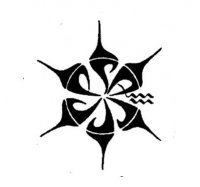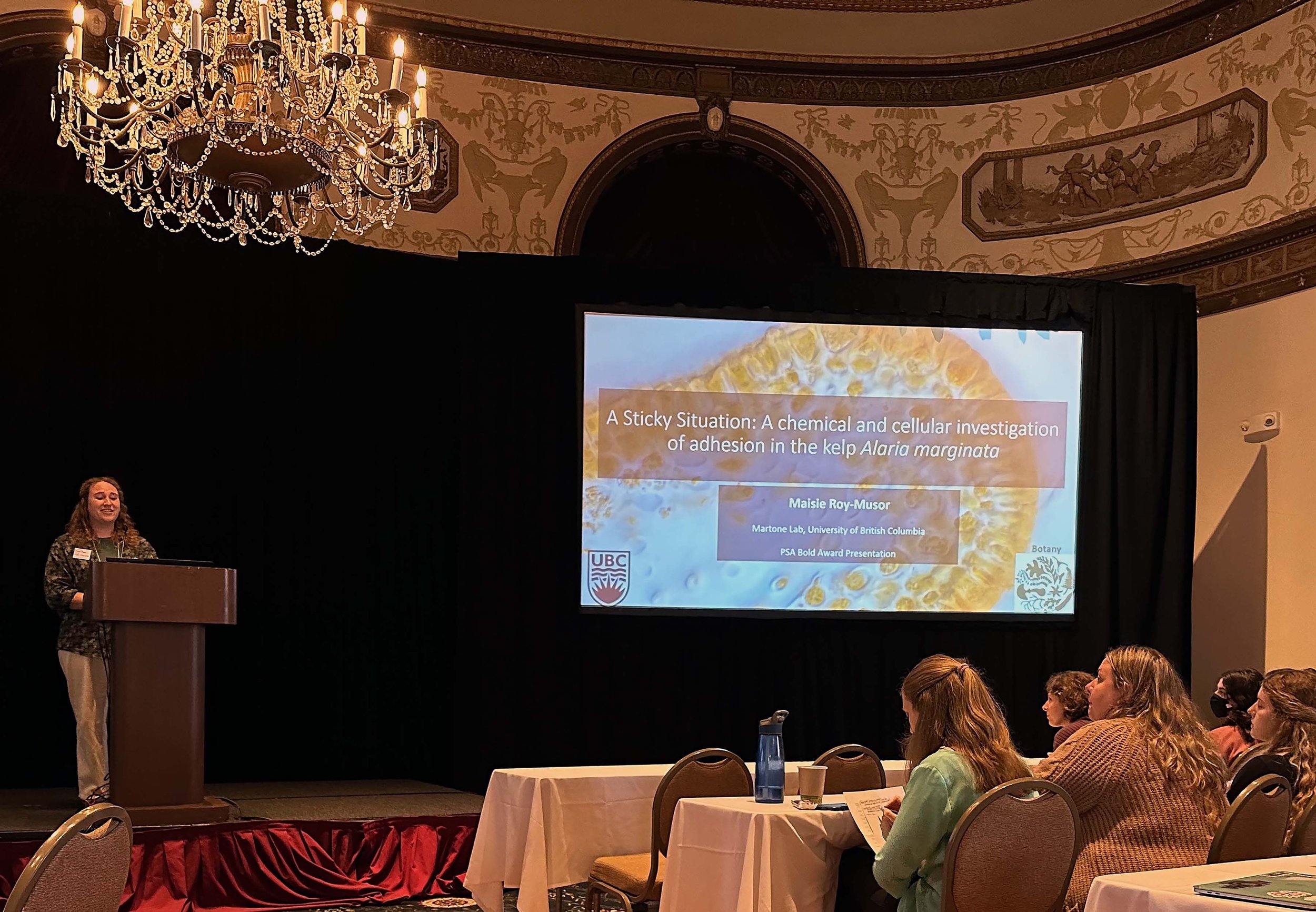Harold C. Bold Award
The Bold Award was established in 1973 to honor Harold C. Bold, former president of the Phycological Society and has been awarded at PSA annual meetings since 1974. The Award is given for the outstanding phycological paper presented by a graduate student at the Annual Meeting as determined by the Bold Award Committee. The original funding for this award came from the sale of Contributions in Phycology (1971), edited by Malcolm Brown and Bruce Parker. The winner will be awarded a certificate and monetary prize of $1000.
Harold C. Bold (photo courtesy of M. Wynne)
Bold Award Eligibility: Graduate students who are PSA members, regardless of nationality, are eligible to compete for the Bold Award, as well as former students within twelve months of completion of their degree. The work presented must be that of the student, must be presented orally by the student in English, and should be a complete or nearly complete project. Only one presentation may be made per year and students may enter no more than twice, and not in successive years. Previous Bold Award recipients and those who have failed to give a scheduled Bold Award paper without valid reason are ineligible.
To compete for the Bold Award: Students must notify the Award Committee chair (Dr. Matt Ashworth, address below) via e-mail by the close of registration for the annual PSA meeting. The email must include (1) a statement of interest, (2) a tentative title of their presentation, and (3) the name and contact information of the student’s research director (mentor or major advisor) or department chair. The student must request that an original signed letter be sent by email to the Award Committee Chair directly from the student's research director (mentor or major advisor) or department chair, verifying that the candidate is a student and that the work to be presented represents the initiative, imagination, and labor of the student. This letter of support must also be received by the close of registration for the annual PSA meeting.
Dr. Matt Ashworth
University of Texas, Austin
UTEX Culture Collection of Algae
205 W. 24th St.
Biological Laboratories, 316
Austin, TX 78712 USA
email
Past Recipients
2023 Bold Awardee Maisie Roy-Musor presenting on a sticky situation in kelp at the PSA meeting in Providence, RI
Past Recipients
2023
Maisie Roy-Musor. A sticky situtation: A chemical and cellular investigation of adhesion in the kelp Alaria marginata.
2022
Sabrina Heiser. What drives the distribution of chemical defense diversity in a sessile macroalga?
2021
Timothy Bateman. Laboratory induced evolution of thermal tolerance differs in genotypes of the symbiotic dinoflagellate Breviolum minutum.
Mickey Rogers. An analytical approach to monitoring surface chemistry of small-scale Skeletonema marinoi algal blooms.
2019
Hannah Reich. Iron availability dictates the response of coral symbionts to thermal stress
2018
Sam Starko. A comprehensive kelp phylogeny sheds light on the evolution of an ecosystem
Danny Wolf. Multi-marker metabarcoding assesment of biodiversity within stream biofilm communities along an acid mine drainage recovery gradient
2017
Kyra Janot. To build a coralline: the effect of morphology and materials on bending in convergent articulated corallines
2016
Thomas Sauvage. A metabarcoding framework for a facilitated survey of endolithic phototrophs with tufA.
2015
Grant Jones. Phylogeny and function: the role of the eukaryotic initiation factor 4E in control of gene expression in dinoflagellates.
Sarah DeVaul. Striking a balance between phototrophy and heterotrophy in the mixotrophic Chrysophyte Dinobryon sp.
2014
Heather Hunsperger. Many Paths to Chlorophyll: The Evolution of Protochlorophyllide Oxidoreductases in the Algae.
Rachel Wade. Molecular determination of Kleptoplast origins of the sea slug Plakobranchus Ocellatus supports cryptic Bryopsidalean diversity in the Hawaiian Islands.
2013
Sophie J. McCoy. (with co-authors R. T. Paine and C. A. Pfister) Shifting strengths of species interactions in a guild of crustose coralline algae (Rhodophyta, Corallinales) respond to ocean acidification.
2012
Emily T. Johnston. (with co-authors N. Buhari, I. Djawad & M. L. Vis). The systematics and biogeography of the Thoreales, a freshwater red algal order.
Jennifer H. Wisecaver. (with co-author J. D. Hackett) Horizontal gene transfer is a significant driver of gene innovation in dinoflagellates.
2011
Philip Bucolo. Effects of Macroalgal Chemical Extracts on Spore Behavior of the Antarctic Epiphyte Elachista antarctica.
Elizabeth D. Tobin. Motility During Pelagic-Benthic Life-Stage Transitions for the Harmful Alga, Heterosigma akashiwo and the Implications for Bloom Dynamics.
2010
J. Jeffrey Morris. Evolution towards dependency for a free-living organism: heterotrophic "helpers" increase resistance of Prochlorococcus to ecologically relevant concentrations of hydrogen peroxide.
2009
Yen-Chun Liu. Mechanism for differential desiccation tolerance in Porphyra species.
2008
Brian P. Piasecki. Uniflagellar mutants in Chlamydomonas reinhardtii provide insights into basal body maturation and flagellar formation.
2007
Brent Bellinger. Significance of diatom EPS in food webs of Colne estuary biofilms: tracking 13C through lipids and polysaccharides tells the story.
2006
Kimberlee Thamatrakoln. Comparative sequence analysis of diatom silicon transporters: towards a molecular model of silicon transport.
Pema Kitaeff. Distribution of symbiotic algae within the intertidal sea anemone Anthopleura xanthogrammica in Alaska and Oregon.
2005
Virginia Sanchez. Plastid evolution of haptophytes and their relationship to other chlorophyll-c containing algae.
2004
Aimee Bullard. Shifting macrophyte abundances and the primary productivity of Southern California shores.
2003
Jennifer Smith. Invasive macroalgae on tropical reefs: impacts, interactions, mechanisms and management.
2002
Kenia Whitehead. The use of liquid chromatography-mass spectrometry (LC-MS) in the identification and characterization of mycosporine-like amino acids (MAAs).
2001
Mark R. Clegg. Response of freshwater flagellates to environmental gradients.
2000
Terence J. Evens. Photosynthesis in the deep blue sea: photophysiological responses of Phaeodactylum tricornutum to dynamic and static irradiances.
1999
No Award.
1998
Brenda Konar. Effects of Desmarestia viridis on subtidal community structure: Inhibition of urchin movement and algal recruitment.
1997
Brandon Wustman. Modeling extracellular adhesives of Achnanthes longipes andCymbella cistula (Bacillariophyceae).
1996
Edward Doran. Photoregulation of chloroplast gene expression in Heterosigma carterae.
1995
Lisa M. Graziano. Physiological responses of Dunaliella tertiolecta to phosphorus limitation.
1994
M.K. Nishiguchi. The role of dimethylsulfoniopropionate (DMSP) in marine algae and their epiphytes.
1993
Ann E. Montegut-Felkner. Phylogeny of the Euglenophyta - A preliminary analysis derived from small subunit rRNA sequence comparison.
1992
No Award
1991
Ferran Garcia-Pichel. The role of sheath pigments in the adaptation of terrestrial cyanobacteria to near ultraviolet radiation.
1990
Louise A. Lewis. Molecular phylogenetic analysis of Neochloris (Chlorophyceae).
1989
No Award
1988
Tracy Villareal. Host-symbiont interactions in the Rhizosolenia-Richelia association.
1987
Mahmood S. Shivji. Structure and organization of chloroplast DNA from the red algaPorphyra yezoensis.
1986
Gregory J. Doucette. Iron limitation in the marine dinoflagellate Gymnodinium sanguineum: a threshold response.
1985
Kirk E. Apt. Studies on neoplastic growth of marine algae.
1984
F.G. Plumley. Selective accumulation of photosynthetic proteins in Chlamydomonas reinhardtii (Chlorophyceae) following pulsed additions of nitrogen.
1983
Gwen M. Burzychi. New evidence regarding meiosis in the red alga Porphyra.
1982
Ellen L. Rice. A numerical taxonomic study of Fucus distichus (L.) emend. Powell in Nova Scotia and New England
Lizabeth C. Hart. Phenylacetic acid [PAA] distribution, concentration and relationship to blade growth pattern in Pelagophycus porra (Leman) Setchell (Laminariales, Phaeophyta).
1981
Laramie A. Williams. Functional structure of the (-) mating type substance inChlamydomonas.
1980
Susan E. Campbell. The bangiacean Conchocelis (Rhodophyta); morphologically unchanged since the Silurian.
Eric Sideman. Morphological variation and taxonomic problems in Fucus distichus L.
1979
David L. Spector. Light and electron microscopic observations of fertilization in the dinoflagellate Peridinium cinctum.
1978
Jeffrey L. Salisbury. The rhizoplast of Platymonas subcordiformis (Chlorophyta) is a contractile organelle.
Paul W. Gabrielson. The morphology and taxonomy of east coast Solieriaceae (Gigartinales).
1977
Michael W. Hawkes. A field, culture and cytological study of Porphyrella gardneri Smith and Hollenberg (Bangiales).
1976
B.H. Brinkhuis. Seasonal variations on macroalgae productivity in a temperate salt marsh.
Robert G. Sheath. Changes in plastid structure and photosynthetic rates of Porphyra leucosticta conchocelis phase in response to dark incubation.
1975
Lynda J. Goff. Responses of 0donthalia floccosa (Ceramiales, Rhodomelaceae) to infection by the parasite Harveyella mirabilis (Cryptonemiales, Choreocolaceae).
Alan R. Polanshek. Hybridization studies in cultured Petrocelis species from California and the Aleutians.
1974
Ruby Meredith. The genetic basis of male potency in Volvox carteri v. nagariensis.


